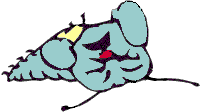Assign
BeforeDock, AfterDock, Undock
These events fire as part of the docking or undocking sequence of a toolbar. BeforeDock fires whenever the toolbar is docked or undocked. AfterDock fires when a toolbar is completely docked (except in one case—see below). Undock fires when a toolbar is undocked, but before it reappears. (And HickoryDickoryDock fires when the mouse runs up the clock.)| Usage | PROCEDURE BeforeDock LPARAMETERS [ nIndex , ] nLocation PROCEDURE AfterDock [ LPARAMETERS nIndex ] PROCEDURE Undock [ LPARAMETERS nIndex ] |
 | AfterDock is supposed to fire once the toolbar has settled into its new location. Most of the time, that's what happens. But in VFP 5, if you call Dock and pass the optional x and y coordinates to specify the exact docking position, AfterDock fires after the base bar has been laid down, but before the toolbar actually appears. In VFP 3, AfterDock always fires after the base bar has been laid down and before the controls appear. This bug is fixed in later versions. |
 | In VFP 3, when a toolbar is moved from one docked location to another with the mouse, only BeforeDock and AfterDock fire; Undock does not. When you use Dock to move the toolbar from one docked position to another, BeforeDock fires, then Undock (for the old position), then BeforeDock and AfterDock fire. In VFP 5 and VFP 6, only BeforeDock and AfterDock fire, no matter which way you dock the toolbar. In VFP 7, the docking sequence has changed again. It is the same no matter which way you dock the toolbar, by mouse or by command, but now you get Undock, BeforeDock (with nLocation = –1), BeforeDock again (this time, with the new nLocation), and finally AfterDock. We thought we knew how this was supposed to work, but now we're confused again. |
 | When you release a docked toolbar, Undock and BeforeDock fire after the toolbar's Destroy method. (In VFP 3, it's the other way around—BeforeDock, then Undock.) Our guess is that, for some internal reasons, FoxPro can't release a docked toolbar, so it has to undock it first. Because of this, you'll want to check for the existence of the contained objects before you start to manipulate them within these methods—otherwise, you'll end up with the dreaded "Unknown member" error. |
| Example | * Handle the case where a control doesn't fit for side docking. * Making the control invisible solves the problem. PROCEDURE BeforeDock LPARAMETERS nLocation IF INLIST(nLocation,1,2) * Dock to side, so remove check box This.chkMyCheck.Visible = .F. ELSE * See if we need to put it back IF INLIST(This.DockPosition,1,2) This.chkMyCheck.Visible = .T. ENDIF ENDIF |
| See Also | Dock, Docked, DockPosition, Toolbar |
View Updates
Copyright © 2002 by Tamar E. Granor, Ted Roche, Doug Hennig, and Della Martin. All Rights Reserved.
EAN: 2147483647
Pages: 899